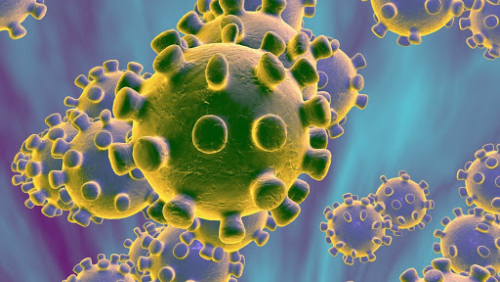5G tehnologija in indukcija koronavirusa v kožnih celicah
https://web.archive.org/web/20200724011555/https://pubmed.ncbi.nlm.nih.gov/32668870/
- 1Department of Nuclear, Sub-nuclear and Radiation Physics, G. Marconi University, Rome, Italy.
- 2Central Michigan Saginaw, Michigan, USA.
- 3Department of Dermatology and Venereology, I.M. Sechenov First Moscow State Medical University, Moscow, Russia.
- PMID: 32668870
- DOI: 10.23812/20-269-E-4
POVZETEK:
V tej raziskavi prikazujemo, da bi 5G milimetrske valove (op. prev. 30GHz-300 GHz) lahko absorbirale dermatološke celice, ki delujejo kot antene, jih prenašale na druge celice in igrale glavno vlogo pri proizvodnji koronavirusov v bioloških celicah.
DNK je zgrajena iz nabitih elektronov in atomov in ima strukturo podobno induktorju. To strukturo bi lahko razdelili na linearne, toroidne in okrogle induktorje. Induktorji delujejo z zunanjimi elektromagnetnimi valovi, se premikajo in proizvajajo nekaj dodatnih valov znotraj celic.
Oblike teh valov so podobne šestkotnim in peterokotnim oblikam baz DNK, ki so njihov izvor. Ti valovi proizvajajo nekaj lukenj v tekočini znotraj jedra.
Za zapolnitev teh lukenj izdelajo nekaj dodatnih šestkotnih in peterokotnih baz. Te baze bi se lahko med seboj združile in tvorile virusom podobne strukture, kot je Coronavirus.
Za proizvodnjo teh virusov znotraj celice je potrebno, da je valovna dolžina zunanjih valov krajša od velikosti celice. Tako bi lahko 5G milimetrski valovi bili dobri kandidati za gradnjo virusom podobnih struktur, kot so koronavirusi (COVID-19) znotraj celic.

Cela študija je na naslovu :
https://jdfor2020.com/wp-content/uploads/2020/07/FIORANELLI.pdf
* * *
https://publishwall.si/radha88880000/post/536533/dr-cowan-dr-havas-dr-backwinkel-in-dr-davis-koronavirus-covid-19-in-elektromagnetno-sevanje-4g-in-5g
* * *
Komentar prof. Olle Johansson-a 25.7. 2020
It is a hypothesis-generating commentary paper, and contains no real evidence for that this is actually ongoing, or have happened. as far as I can judge it. Any speculation may -of course - eventually be right, but this one feels very far-fetched.With my very best regards,
Yours sincerely, Olle
* * *
Dear Professor Pio Conti;
I am writing to alert you to the fact that a recently published article, 5G Technology and induction of coronavirus in skin cells should be retracted. It is not credible, and appears to be a spoof.
If I understand it correctly, this "editorial" (it is not an editorial, which should come from the editor - i.e., yourself) posits the possibility that something that looks like a virus - specifically SARS-CoV-2 that causes COVID-19 - could result from irradiation of skin cells with mm waves. There is a long list of reasons that this is not plausible, but a key one that is readily understood is that SARS-CoV-2 contains particular RNA that is unlike RNA in human cells. This RNA would have had to come from another virus - it would not assemble from human RNA. Indeed, this paper talks about genes and DNA - not RNA, that is the genetic material in the virus. Such a fundamental error should have immediately discredited the work.
Every once in a while people submit a spoof paper to see if it will pass peer review, and this has all of the hallmarks of such a paper - legends are written in simplistic English, there are colourful images to be posted on social media, and it has pages of irrelevant math including many keywords that people would understand.
I strongly believe that you and your peer reviewers have been spoofed, and hope that you will retract this paper immediately. Rather than feeding controversy and confusion over the very real health effects of radiofrequency radiation, I look forward to you taking a stance for strong, credible science.
Please feel free to contact me with regard to this important issue.
Sincerely,
Meg Sears
* * *
https://www.naturalhealth365.com/5g-radiation-coronavirus-3492.html
One of the authors is an astrophysicist who formerly worked at the Research Institute for Astronomy and Astrophysics of Maragha in Iran, one is a Human Physiology professor at G. Marconi University in Rome and yet another is a professor of Dermatology at the G. Marconi University and the President of the World Health Academy, Dermatology.
Or, is there another factor at play? Dr. Pall maintains that there is.
He reports that exposure to 5G radiation activates voltage-gated calcium channels in the body and increases intracellular calcium, oxidative stress, NF-KappaB, (a transcription factor involved with the development of cancer and other diseases) elevation, inflammation and apoptosis, or cell death.
These factors promote the replication and spread of coronaviruses, as well as leading to the development of pneumonia (the predominant cause of death in COVID-19).
*
https://pubmed.ncbi.nlm.nih.gov/18517913/
Human skin as arrays of helical antennas in the millimeter and submillimeter wave range
*
https://www.sciencedirect.com/science/article/abs/pii/S0013935118300331
The human skin as a sub-THz receiver – Does 5G pose a danger to it or not?
Received 2 September 2017, Revised 18 December 2017, Accepted 23 January 2018, Available online 22 February 2018.
Highlights
The sweat duct is regarded as a helical antenna in the sub-THz band, reflectance depends on perspiration.
•We outline the background for non-thermal effects based on the structure of sweat ducts.
•We have introduced a realistic skin EM model and found the expected SAR for the 5G standard.
Abstract
In the interaction of microwave radiation and human beings, the skin is traditionally considered as just an absorbing sponge stratum filled with water. In previous works, we showed that this view is flawed when we demonstrated that the coiled portion of the sweat duct in upper skin layer is regarded as a helical antenna in the sub-THz band. Experimentally we showed that the reflectance of the human skin in the sub-THz region depends on the intensity of perspiration, i.e. sweat duct's conductivity, and correlates with levels of human stress (physical, mental and emotional). Later on, we detected circular dichroism in the reflectance from the skin, a signature of the axial mode of a helical antenna.
The full ramifications of what these findings represent in the human condition are still unclear. We also revealed correlation of electrocardiography (ECG) parameters to the sub-THz reflection coefficient of human skin. In a recent work, we developed a unique simulation tool of human skin, taking into account the skin multi-layer structure together with the helical segment of the sweat duct embedded in it. The presence of the sweat duct led to a high specific absorption rate (SAR) of the skin in extremely high frequency band. In this paper, we summarize the physical evidence for this phenomenon and consider its implication for the future exploitation of the electromagnetic spectrum by wireless communication.
Starting from July 2016 the US Federal Communications Commission (FCC) has adopted new rules for wireless broadband operations above 24 GHz (5 G). This trend of exploitation is predicted to expand to higher frequencies in the sub-THz region. One must consider the implications of human immersion in the electromagnetic noise, caused by devices working at the very same frequencies as those, to which the sweat duct (as a helical antenna) is most attuned. We are raising a warning flag against the unrestricted use of sub-THz technologies for communication, before the possible consequences for public health are explored.
*
Jul 24, 2020
